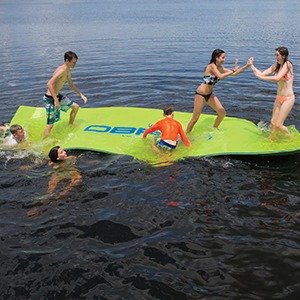Are you ready to hit the waves but struggling to find the right wetsuit? Look no further! At Bart's Water Sports, we understand that every water enthusiast has unique needs and preferences when it comes to their wetsuits. That's why we have carefully curated a diverse range of wetsuits to cater to all shapes, sizes, and activities. Whether you're a surfer, diver, or just love being in the water, we have the perfect match for you. Let's dive in and discover your perfect fit in our wetsuit collection.
Understanding Wetsuit Materials and Thickness
Wetsuits are primarily made from neoprene, a type of synthetic rubber that provides insulation and flexibility. The thickness of a wetsuit, measured in millimeters, is crucial in determining its warmth and buoyancy. Thicker wetsuits, often ranging from 5mm to 7mm, are designed for colder waters, offering greater thermal protection. Conversely, thinner wetsuits, such as those between 2mm and 3mm, are more suitable for warmer conditions, allowing for increased mobility. Understanding the balance between thickness for warmth and flexibility for movement is key in selecting the right wetsuit for your water activities.
Decoding Wetsuit Styles for Various Water Activities
Selecting the right wetsuit style is crucial for enhancing your performance and comfort during various water activities. For surfers and paddleboarders, full suits or spring suits offer a blend of warmth and flexibility. Divers often prefer full suits with added features like reinforced knees and sealed seams for extra protection against the cold and abrasion. Meanwhile, triathletes might choose sleeveless wetsuits for less resistance during swimming. Kayakers and windsurfers often opt for farmer john style wetsuits, providing warmth while allowing unrestricted upper body movement. Identifying the primary use of your wetsuit will guide you in choosing the style that best fits your aquatic adventures.
How to Ensure a Perfect Fit: Sizing and Measurement Tips
To guarantee a wetsuit fits like a second skin, accurate measurements are crucial. Start by measuring your chest, waist, hips, and height. Manufacturers often have their own sizing charts, so compare your measurements with their guide to find the best match. Remember, a well-fitting wetsuit should be snug but not restrict movement, especially around the shoulders and knees. If possible, try on different sizes and brands, as fit can vary. Pay attention to areas that might create discomfort, such as the neck and underarms, to avoid chafing and ensure maximum comfort and performance in the water.
Care and Maintenance: Extending the Life of Your Wetsuit
To ensure your wetsuit remains in top condition, proper care and maintenance are essential. Always rinse your wetsuit with fresh water after each use to remove salt, chlorine, and other debris. Avoid wringing it out, which can damage the neoprene. Hang it to dry away from direct sunlight and heat sources, as these can degrade the material over time. When storing, lay it flat or hang it on a wide hanger to prevent creases. Avoid folding to keep the shape intact. Following these simple steps will help extend the life of your wetsuit, keeping you warm and comfortable in the water for seasons to come.
The Importance of Flexibility in Your Wetsuit Fit
Flexibility in a wetsuit is paramount for unhindered movement and overall performance in the water. A flexible wetsuit adapts to your body's motions, whether you're paddling out to catch a wave or exploring underwater realms. This adaptability ensures that your energy is spent on the activity, not on fighting against the stiffness of your gear. Opting for a wetsuit with the right blend of neoprene thickness and elasticity can make a significant difference in your water sports experience, allowing for seamless movements and enhancing your ability to perform at your best.





Comments